Thinking in Circuits brings together the work of ten artists engaged with systems of exchange and feedback. The exhibition draws from the language of cybernetics, a field that emerged in the mid-twentieth century to describe processes of communication, self-regulation, and feedback across organisms and machines. At its core, cybernetics studies how systems like bodies, ecosystems, or technologies use feedback to regulate themselves and adapt to change.
Since the American mathematician Norbert Wiener coined the term, what began as a technical computational science has become a way of thinking about interdependence: How every system adjusts by sensing the effects of its actions within an environment. It describes a world in which everything learns by listening. In this expanded sense, cybernetics offers a counterpoint to hierarchical models of control. As cyberfeminist writer Sadie Plant observes, the notion of control in such systems shifts from domination to communication. Systems and ecologies sustain themselves not through command but through relation, through countless micro-adjustments and negotiations of difference.
This feedback logic of cybernetics has long structured the infrastructures we live in—technological, ecological, and social. The artists in Thinking in Circuits make this circulation perceptible and apply it to think about bodies, ecologies, media, and collective systems. Each reflects these ideas through different artistic languages from movement and sound to algorithms, data, text, plants, and advertising. Some address cybernetic principles directly in their methods or collaborations with algorithms, while others use it more as a conceptual lens.
A temporary open structure was designed as an expansion of Bounding Box’s virtual project space, inspired by Cedric Price’s Fun Palace (1960s), a visionary project developed with cybernetician Gordon Pask. Conceived as a self-regulating architecture, the Fun Palace adapted to its visitors and users, functioning as a kind of performative machine rather than a fixed building.
Thinking in Circuits originated from an open call of the same name and is presented as a pavilion for the 7th edition of The Wrong Biennale.

VINCENT EGON VERSCHUEREN
Joyrider (25'47")
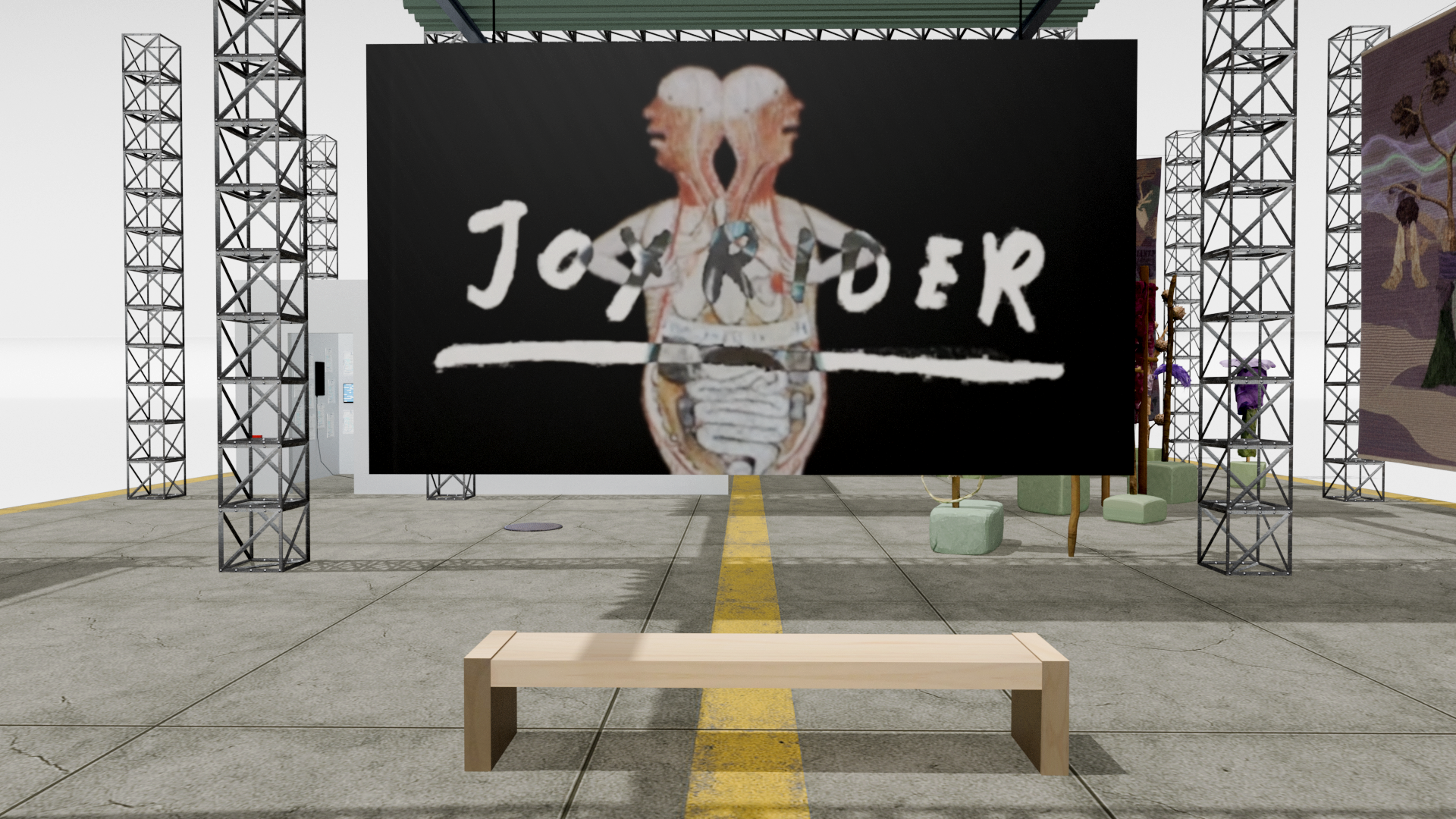 Joyrider takes us on a visceral joyride through the human digestive system. Across seven chapters, it reveals the body’s hidden machinery, its gears, juices, and ecosystems along the highway from mouth to anus. Vincent Egon Verschueren connects this physical system to a psychological and spiritual process of ego dissolution, where the boundaries of the self dissolve and merge with a larger flow of being. Along the way, the self is ingested, processed, and expelled.
Drawing from Christian mysticism (cupio dissolvi, “I wish to dissolve”) and Taoist ideas of non-self, the work treats identity as something fluid and recursive, continuously reshaped through system and time. Our bodies are cybernetic, self-regulating systems. Though the digestive tract follows a seemingly linear path, its workings are vital to processing material and information that help the body maintain equilibrium.
Joyrider takes us on a visceral joyride through the human digestive system. Across seven chapters, it reveals the body’s hidden machinery, its gears, juices, and ecosystems along the highway from mouth to anus. Vincent Egon Verschueren connects this physical system to a psychological and spiritual process of ego dissolution, where the boundaries of the self dissolve and merge with a larger flow of being. Along the way, the self is ingested, processed, and expelled.
Drawing from Christian mysticism (cupio dissolvi, “I wish to dissolve”) and Taoist ideas of non-self, the work treats identity as something fluid and recursive, continuously reshaped through system and time. Our bodies are cybernetic, self-regulating systems. Though the digestive tract follows a seemingly linear path, its workings are vital to processing material and information that help the body maintain equilibrium.
Joyrider
MATTIA BENEDETTI
Ghost in the Shell (15'13")
 Ghost in the Shell is a sound piece created through a dialogue between human and non-human systems. Using a mix of digital and analog tools, Mattia Benedetti sets up a network of machines that generate sound on their own, react to each other and to the space around them. One of the key elements in his setup is a no-input mixer: an instrument that produces sound from its own internal feedback rather than any external source, turning the machine into both a performer and a listener. Mattia wants to act as a conductor that guides this autonomous system rather than a controller. He is interested in shaping the process as it unfolds. The title, borrowed from the 1990s anime, subtly points to the blurred boundaries between organic and artificial life.
Ghost in the Shell is a sound piece created through a dialogue between human and non-human systems. Using a mix of digital and analog tools, Mattia Benedetti sets up a network of machines that generate sound on their own, react to each other and to the space around them. One of the key elements in his setup is a no-input mixer: an instrument that produces sound from its own internal feedback rather than any external source, turning the machine into both a performer and a listener. Mattia wants to act as a conductor that guides this autonomous system rather than a controller. He is interested in shaping the process as it unfolds. The title, borrowed from the 1990s anime, subtly points to the blurred boundaries between organic and artificial life.
Ghost in the Shell
MELODY MOU PEIJING
(Un)Natural Language
 (Un)Natural Language is a tool-driven reading of policy language, using machine learning to show how ‘neutral’ wording normalises growth and extraction under an ecological guise. Working from her own dataset of policy papers and reportson water infrastructure, Mou Peijing feeds these texts into a BERT-based classifier to highlight seemingly neutral terms that, in practice, skew towards expansion and environmental harm. Passages are labelled along two recurrent frames: pro-growth discourse and ecologically detrimental discourse, to map how ideology threads itself through administrative prose.
The work is structured as a human-in-the-loop system. Mou feeds in the documents, reviews what the model flags, spots mistakes or grey areas, adjusts the labels and definitions, and runs it again. Each round makes the system more sensitive to nuance. It’s a constant feedbackloop wherein Mou and the machine learn and keep negotiating what the words mean. (Un)Natural Language asks us to hear how words do work in the world and how the language of policy can tilt the relationship between humans and the more-than-human, and how “growth” becomes an end in itself through the quiet force of extractivist speech.
(Un)Natural Language is a tool-driven reading of policy language, using machine learning to show how ‘neutral’ wording normalises growth and extraction under an ecological guise. Working from her own dataset of policy papers and reportson water infrastructure, Mou Peijing feeds these texts into a BERT-based classifier to highlight seemingly neutral terms that, in practice, skew towards expansion and environmental harm. Passages are labelled along two recurrent frames: pro-growth discourse and ecologically detrimental discourse, to map how ideology threads itself through administrative prose.
The work is structured as a human-in-the-loop system. Mou feeds in the documents, reviews what the model flags, spots mistakes or grey areas, adjusts the labels and definitions, and runs it again. Each round makes the system more sensitive to nuance. It’s a constant feedbackloop wherein Mou and the machine learn and keep negotiating what the words mean. (Un)Natural Language asks us to hear how words do work in the world and how the language of policy can tilt the relationship between humans and the more-than-human, and how “growth” becomes an end in itself through the quiet force of extractivist speech.
(Un)Natural Language
ELENA BAJO
Datura Dreams (Encoded)
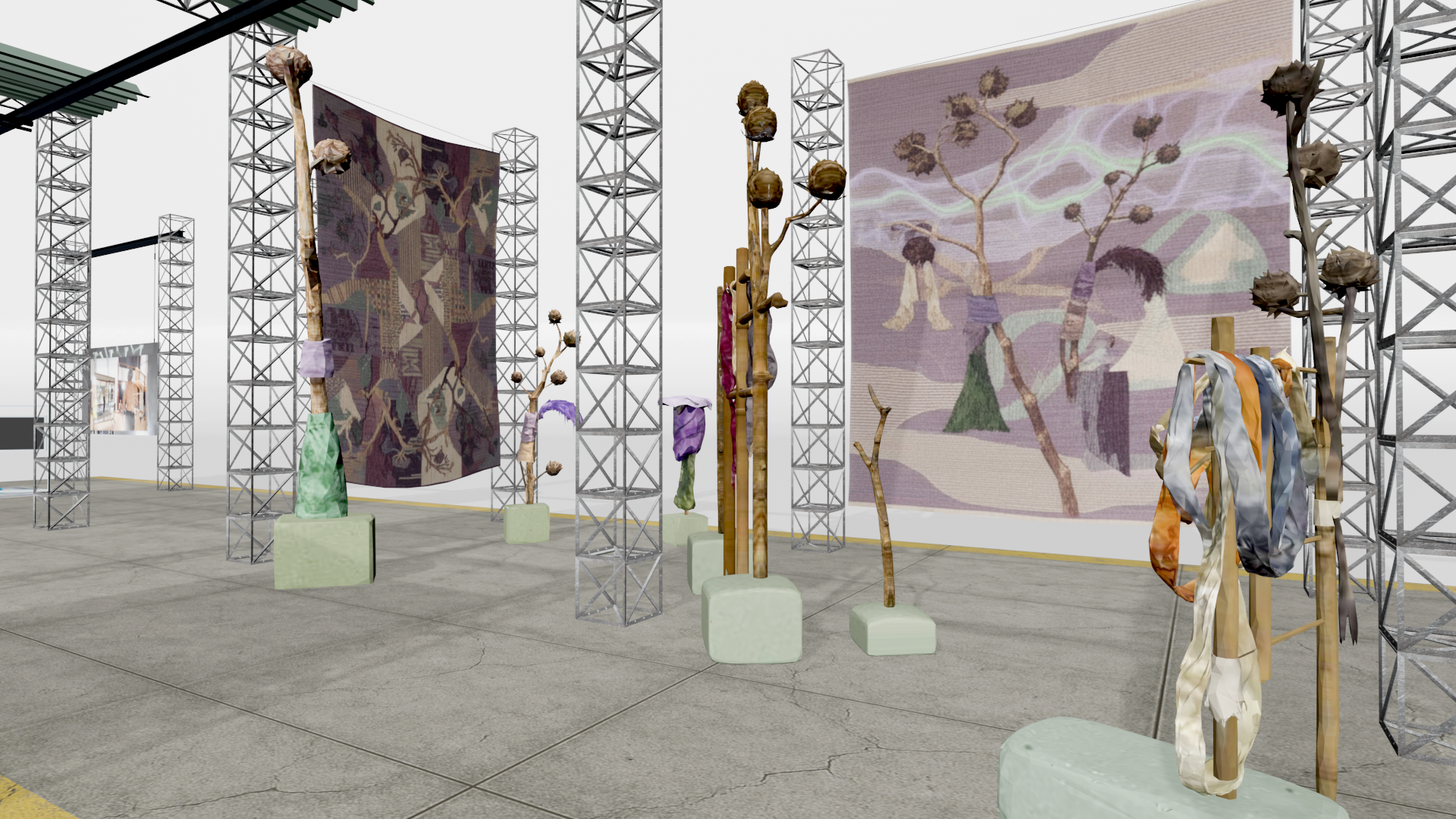
CHRISTIAN SCENINI
Planetary Packaging
 Planetary Packaging explores the human urge to recreate the sky within confined systems. Inside a transparent plastic world, two elements—Amanda (silver) and George (sulphur)—sit in constant chemical tension. Their proximity would normally trigger oxidation, slowly darkening Amanda’s surface and corrupting the air. A connected oxygen tank monitors the internal atmosphere and periodically refreshes it, delaying the inevitable reaction through cycles of “atmospheric dialysis.” The setup functions as a small-scale cybernetic life-support system: the atmosphere is measured, adjustments are made, and balance is maintained. It mirrors how larger ecosystems, like Earth’s own atmosphere, depend on continuous feedback and correction. It reflects a Russian Doll logic of a human-made microclimate nested within the larger atmospheric systems it tries to imitate.
A conversation between Amanda and George, reflecting on the fragility of the world they inhabit, is streamed on the screen within the installation.
Planetary Packaging explores the human urge to recreate the sky within confined systems. Inside a transparent plastic world, two elements—Amanda (silver) and George (sulphur)—sit in constant chemical tension. Their proximity would normally trigger oxidation, slowly darkening Amanda’s surface and corrupting the air. A connected oxygen tank monitors the internal atmosphere and periodically refreshes it, delaying the inevitable reaction through cycles of “atmospheric dialysis.” The setup functions as a small-scale cybernetic life-support system: the atmosphere is measured, adjustments are made, and balance is maintained. It mirrors how larger ecosystems, like Earth’s own atmosphere, depend on continuous feedback and correction. It reflects a Russian Doll logic of a human-made microclimate nested within the larger atmospheric systems it tries to imitate.
A conversation between Amanda and George, reflecting on the fragility of the world they inhabit, is streamed on the screen within the installation.
MINRUI QIAO
TRACE
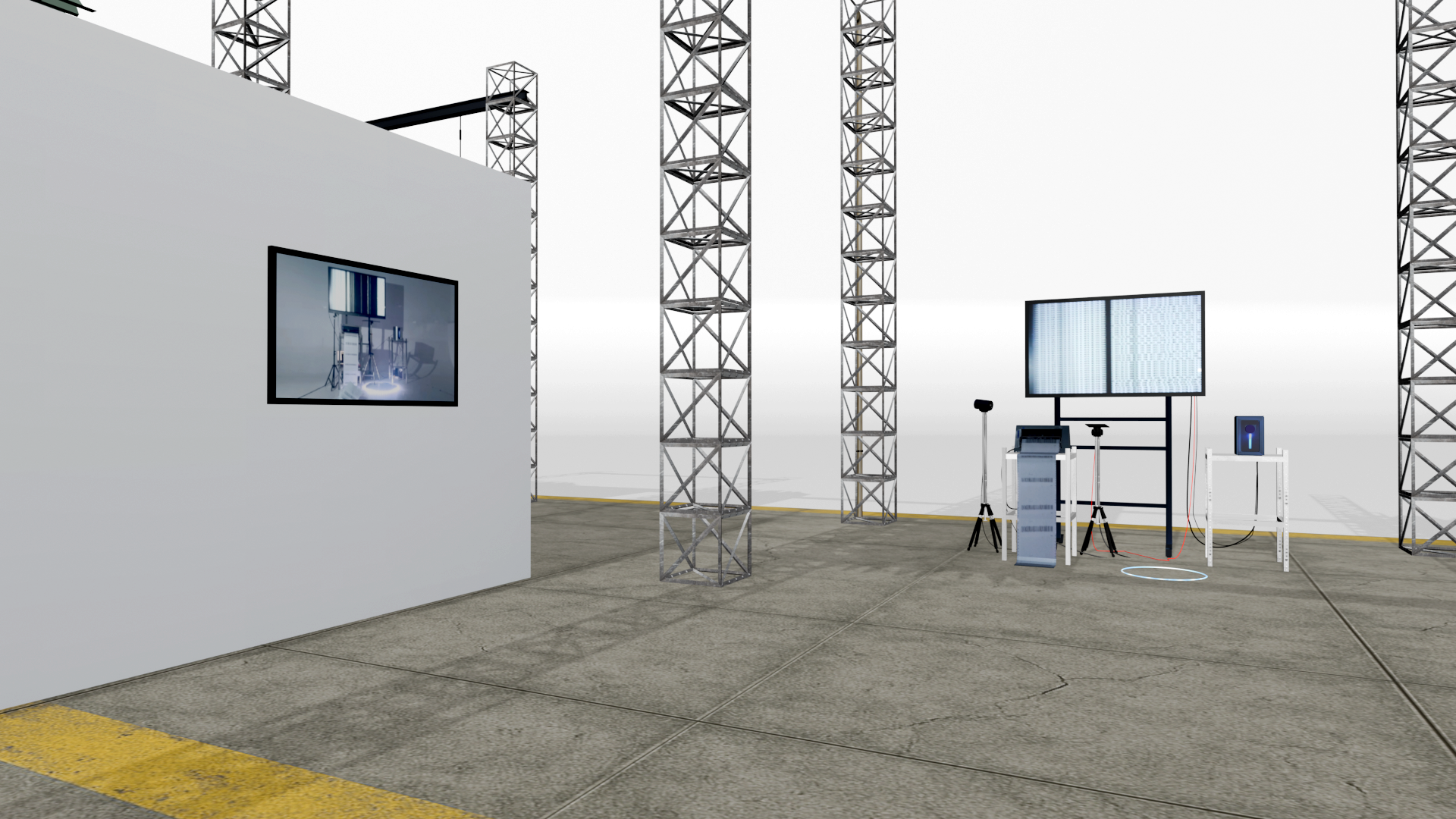 In this code-based video installation, a human voice starts the circuit. Minrui Qiao converts a voice into numbers (the token IDs used inside large language models) and routes them through a chain of devices from a screen to a printer to a camera to a speaker and back to the microphone. Each pass re-encodes the signal like a game of telephone between machines.
The work is one long translation loop. It’s a circuit kicked off by a voice and then sustained by the system, continually remixing its meaning. Each device imposes its own grammar—resolution, latency, compression, gain—so translation also means loss, drift and control. Echoing Canadian philosphe and media theorist Marshall McLuhan’s sense that media extend us even as they estrange us, Minrui’s system never stops translating, a process that accumulates noise until the voice turns into the trace of its passages through the machine.
In this code-based video installation, a human voice starts the circuit. Minrui Qiao converts a voice into numbers (the token IDs used inside large language models) and routes them through a chain of devices from a screen to a printer to a camera to a speaker and back to the microphone. Each pass re-encodes the signal like a game of telephone between machines.
The work is one long translation loop. It’s a circuit kicked off by a voice and then sustained by the system, continually remixing its meaning. Each device imposes its own grammar—resolution, latency, compression, gain—so translation also means loss, drift and control. Echoing Canadian philosphe and media theorist Marshall McLuhan’s sense that media extend us even as they estrange us, Minrui’s system never stops translating, a process that accumulates noise until the voice turns into the trace of its passages through the machine.
TRACE
NICOLETA MURES
Doomscroll & Web Meditation
 Doomscroll distils the endless feed of swipe, reward, repeat. In the other room, Web Meditation stages an attempt to step out of this loop, but also the struggle to espcae the remaining mental afterimage. The loop doesn’t stop when the screen goes dark, it migrates into our bodies. Our gestures train the system and the system trains our attention. The circuit amplifies itself, its turns our agency into automation which is why stepping out feels less like a choice and more like breaking a circuit. Nicoleta Mureș shows this push–pull as both alluring and constraining, asking what it takes to reclaim attention inside tools designed to keep it. “Touch some grass!”
Doomscroll distils the endless feed of swipe, reward, repeat. In the other room, Web Meditation stages an attempt to step out of this loop, but also the struggle to espcae the remaining mental afterimage. The loop doesn’t stop when the screen goes dark, it migrates into our bodies. Our gestures train the system and the system trains our attention. The circuit amplifies itself, its turns our agency into automation which is why stepping out feels less like a choice and more like breaking a circuit. Nicoleta Mureș shows this push–pull as both alluring and constraining, asking what it takes to reclaim attention inside tools designed to keep it. “Touch some grass!”
JERRY GALLE
Life as Matter that Chooses (10')
 Jerry Galle’s film Life as Matter that Chooses imagines near-future beings and terrains where the line between natural and synthetic is hard to draw. Using sound, image and text in a pseudo-documentary register, it investigates how through plastic and electronic waste materials intelligence might circulate and new forms of life could take shape. Jerry’s links cellular patterning to self-regulating systems, drawing on Alan Turing’s work on morphogenesis and Mike Levin’s research into bio-electrical signalling. Cells exchange electrical cues, environments respond, and new configurations of matter and mind arise. Life as Matter that Chooses portrays evolution and life as a continuous control loop of sensing and adaptation.
Jerry Galle’s film Life as Matter that Chooses imagines near-future beings and terrains where the line between natural and synthetic is hard to draw. Using sound, image and text in a pseudo-documentary register, it investigates how through plastic and electronic waste materials intelligence might circulate and new forms of life could take shape. Jerry’s links cellular patterning to self-regulating systems, drawing on Alan Turing’s work on morphogenesis and Mike Levin’s research into bio-electrical signalling. Cells exchange electrical cues, environments respond, and new configurations of matter and mind arise. Life as Matter that Chooses portrays evolution and life as a continuous control loop of sensing and adaptation.
Life as Matter that Chooses
ZANDER PORTER
Unbetitelter Tanz
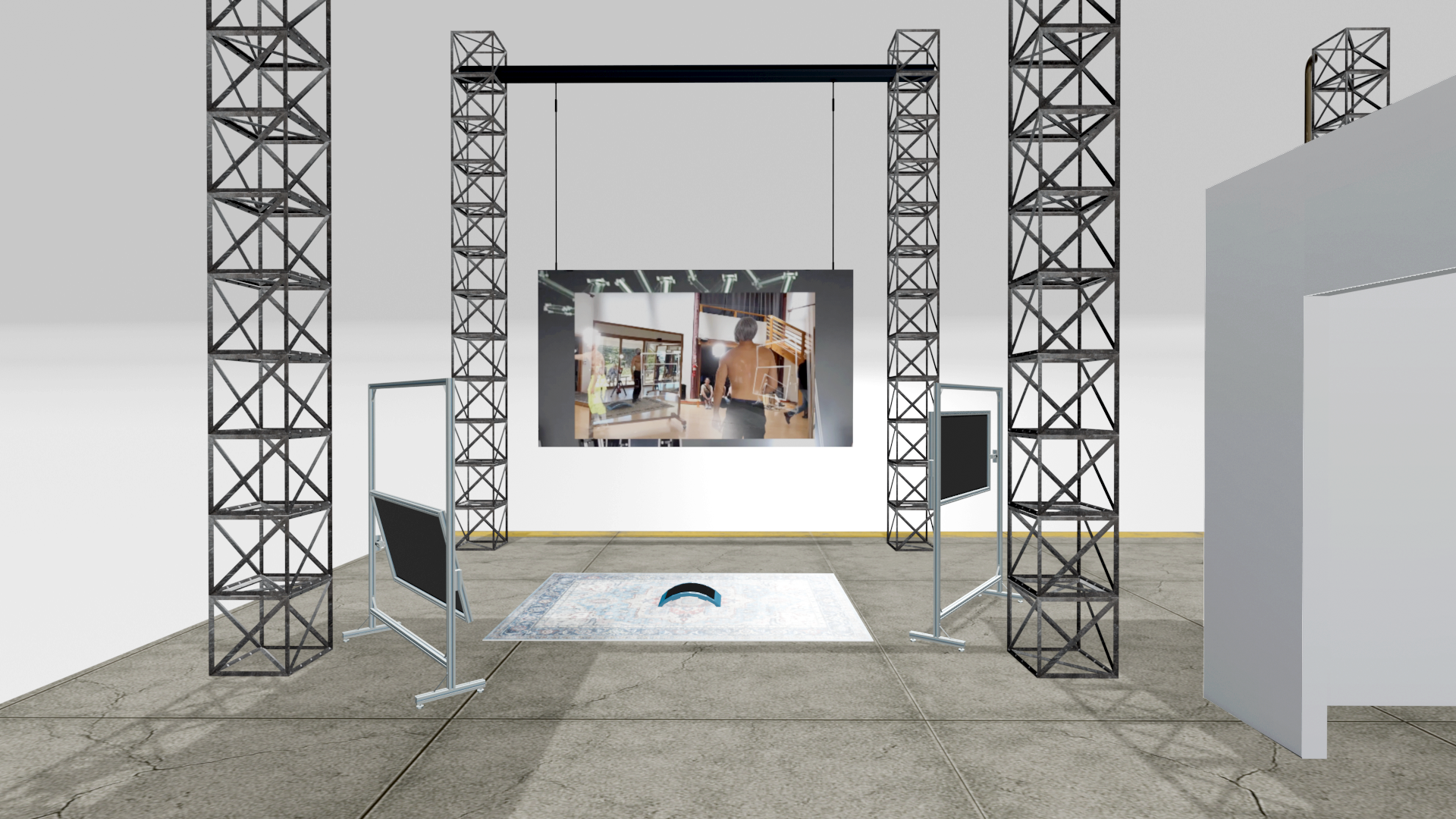 Unbetitelter Tanz is a live duet between body and instrument created with composer Julie Zhu. Zander Porter’s gestures are tracked and mapped via motion-tracking and lightweight machine learning to modulate Julie’s no-input mixer, a feedback instrument that “plays itself”. This live video perfomance is a system of learning and unlearning. Movement shapes sound, sound reshapes movement, and the mapping evolves in its turn. Sitting between artificial and “autistic” intelligences the work shows agency and perception split across human and machine. Developed at Djerassi and the Institute for Computer Music and Sound Technology (ZHdK).
Unbetitelter Tanz is a live duet between body and instrument created with composer Julie Zhu. Zander Porter’s gestures are tracked and mapped via motion-tracking and lightweight machine learning to modulate Julie’s no-input mixer, a feedback instrument that “plays itself”. This live video perfomance is a system of learning and unlearning. Movement shapes sound, sound reshapes movement, and the mapping evolves in its turn. Sitting between artificial and “autistic” intelligences the work shows agency and perception split across human and machine. Developed at Djerassi and the Institute for Computer Music and Sound Technology (ZHdK).
Unbetitelter Tanz
RAQUELLE VERHEYEN
Le Steak de la Mer
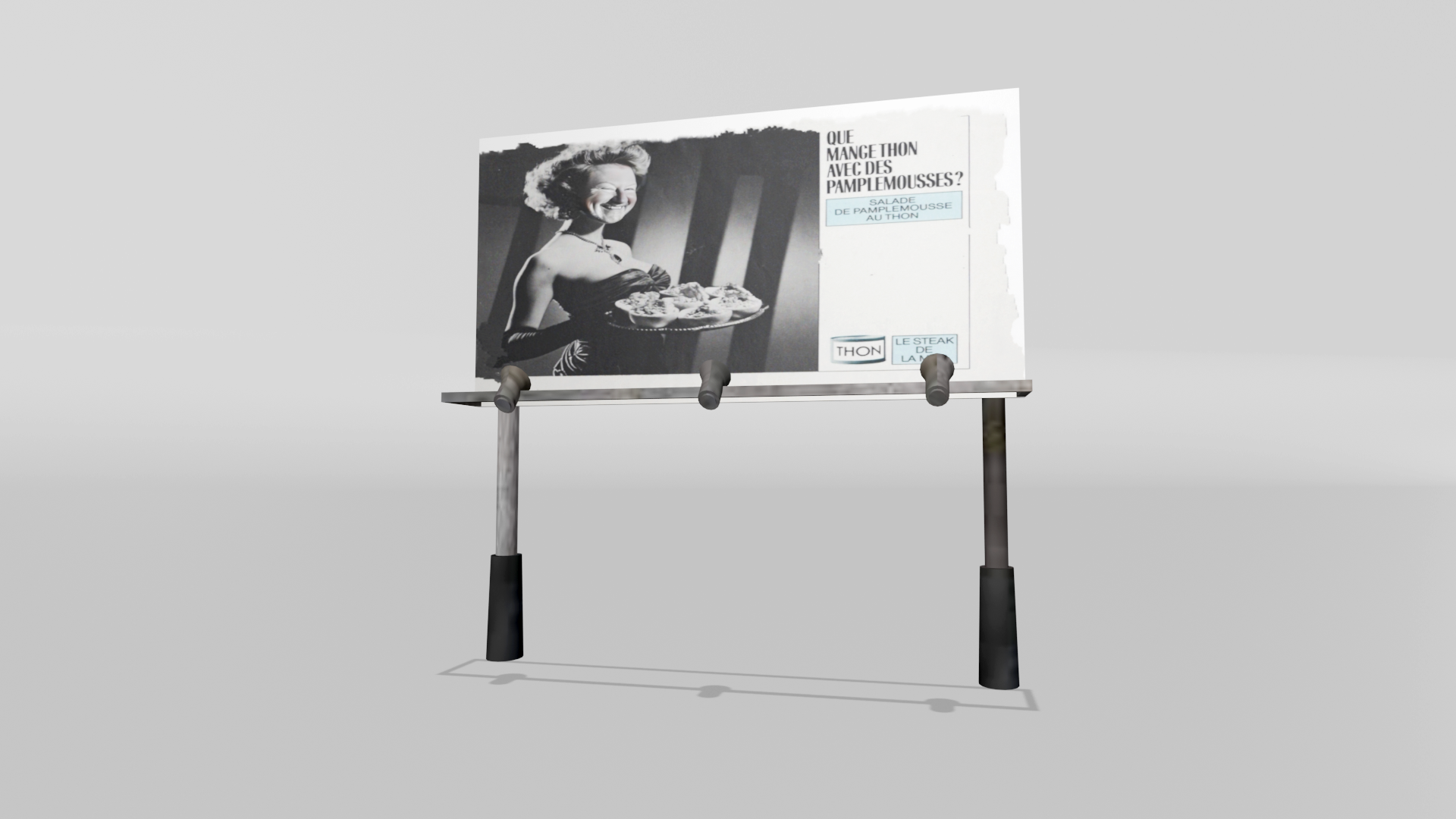 “You feel so much better if you try grapefruit with tuna—this meal is easy and quick.”
“You feel so much better if you try grapefruit with tuna—this meal is easy and quick.”
Le Steak de la Mer takes its title from a 1980s magazine advert pairing grapefruit with tuna. Reworking this found image, Raquelle Verheyen looks at how advertising turns desire and beauty ideals into signals that we pick up, repeat and wear as markers of identity and value. Raquelle’s practice invites us to notice the loops at work in a consumer society. Here images shape habits, habits feed markets, markets commission more images. At the same time, Raquelle points to the traces that production and consumption leave behind, and the odd border between the material and the immaterial where objects and ideas swap places. Things become messages, messages become things.
VINCENT EGON VERSCHUEREN
(1991, Belgium) is an artist based in Antwerp whose practice reworks found imagery from film, television, the internet, and art history across painting, video, and photography. Through processes of layering and reinterpretation, he examines how personal perspectives intertwine with collective symbols. His work has been shown at Secondroom Antwerp, CID Grand-Hornu, and Onboards Biennale, where he received the Jury Prize in 2021 and others.
@vincent.egon.verschueren
vincentegonverschueren.com
MATTIA BENEDETTI
(1995, Italy) creates acousmatic music, pieces for instrument and live electronics and Audiovisual compositions. He's interested in quietness, algorithmic and aleatoric techniques and the relationship between sound and words. His work has been presented in Radiophrenia (Glasgow, London), Tempo Reale (Firenze) and others.
mattiabenedetti.xyz
MELODY MOU PEIJING
(China) is a media artist whose work explores ecology and experimental narrative through computational technologies. Engaging with threatened ecosystems, social conflict, and Indigenous knowledges, her practice investigates how language and technology reproduce ideological assumptions while also offering tools for ecological repair. Her work has been presented at FILE Festival, The New River, Videoformes, the New Media Writing Prize, and the FutureTense Awards.
@melodrama_yu
melodymou.com
ELENA BAJO
(Spain/United States) is an artist, choreographer, and educator whose practice merges plant intelligence, ancestral knowledge, and technological experimentation across sculpture, performance, film, and AI. Working at the intersection of ecology and posthumanism, they develop transcorporeal choreographies in which human, more-than-human, and machine intelligences co-create new forms of coexistence. Bajo has exhibited and performed internationally at Manifesta 15, Performa Biennial New York, and Frieze London, and is the founder of S.L.A.B Project (Wonder Valley, CA).
@elenabajo
elenabajo.com
CHRISTIAN SCENINI
(1999, Italy) is a designer and artist whose practice merges system thinking with speculative imagination. He uses fiction as a method to explore tensions between disciplines and to construct alternative modes of understanding the world. His recent research centres on world-building and the generation of sceneries within closed environments, examining the elements and gestures that sustain planetary systems and the narratives that emerge from them.
@christian.scenini
MINRUI QIAO
(2003, China) is an artist and researcher based in Beijing. Her practice investigates the logics and hidden languages of machines. Working with code-based installations and audiovisual experiments, Qiao explores how uncertainty, error, and feedback loops influence the dynamics of human–machine communication. Her work situates technological systems as sites of mediation and miscommunication, revealing the poetic and unpredictable dimensions of digital interaction.
@miri.q_03
NICOLETA MURES
(1996, Romania) is a visual artist based in Madrid working across digital collage, video, animation, 3D, AR, and generative AI. Her practice examines the virtual body under states of anxiety, fear, and technological stress, probing the limits of flesh—both real and digital. Through dystopian imagery and speculative narratives, Mureș reflects on how technology fuels consumption, isolation, and emotional numbness, suggesting a future in which human perception becomes increasingly object-like and inert. Mureș has presented her work at Simultan Festival (2022, 2024), Digerati Emergent Media Festival (2023, 2024), ADAF (2024) and others.
@nicomures
nicomures.com
JERRY GALLE
(Belgium) is a visual artist whose work explores the complex and often uneasy relationship between digital technology, nature, and culture. His practice investigates how technological images and texts—techno-images and techno-texts—generate new meanings that shift between the geometric and the symbolic, the playful and the critical. His work has been shown at M HKA, Bozar, Museum Dhondt-Dhaenens, the British Film Institute, Ars Electronica, and the International Film Festivals of Rotterdam and Hamburg and others. He is a fellow at V2 Rotterdam and artistic researcher at KASK School of Arts Ghent.
@jerrygalle
jerrygalle.com
ZANDER PORTER
(Germany) is an artist, choreographer (dancer-cyborg) and artistic researcher based in Berlin, working between liveness and onlineness. Xirs practice explores (dis)identification and (dis)embodiment as phenomenological inquiries between surface, soma, portal, and psyche. Drawing on internet semiotics, hormonal technologies, and surveillance paradigms, Porter gamifies gender, affect, and subjectivity to expose and reimagine the techno-social conditions of neoliberal individualisation. Xe is a core member of Xenoentities Network (XEN) and xirs work has been developed and presented at Swiss Institute (New York), Cité Internationale des Arts (Paris), Trauma Bar und Kino (Berlin), and The Saison Foundation (Tokyo) and others.
@z3ndxr
zanderporter.com
RAQUELLE VERHEYEN
(2001, Belgium) is a mixed media artist exploring consumption, objecthood, and the absurdity of material excess. Using found objects and advertisements, she creates assemblages where the line between reality and the consumer dream blurs. Her work questions how products, once desired and discarded, shift in meaning and value. Balancing critique and fascination, Raquelle reflects on the seductive logic of abundance and how individuals reinterpret and reanimate the objects that shape everyday life.
@rakel.dj
raquelleverheyen.be
COMMENTS 💬